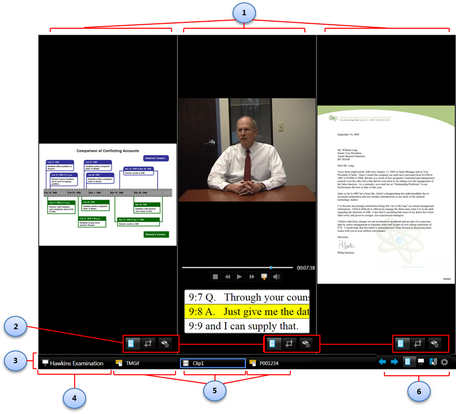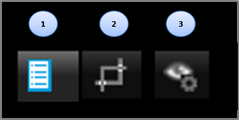Presentation Window
The presentation window is what your audience will see when you run your presentation. By default, the presentation windows opens a single item at a time, however, the presentation window can be divided into multiple item windows. You can control the presentation window using tools available in the presentation task bar and in each item window. You can also control the presentation from the main program window, if the presentation is running on a second display.
This topic describes the functional areas and controls of the presentation window.
|
The Presentation Window
|
||||||||||||||||||||||||||||
|




